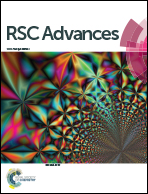High mechanical strength bioactive wollastonite bioceramics sintered from nanofibers
Abstract
The biodegradable wollastonite (CaSiO3, CS) bioceramics can stimulate the growth and osteogenic differentiation of osteoblasts and bone marrow mesenchymal stem cells (BMSCs), and possess excellent bone regeneration ability in vivo. However, their mechanical properties are apparently lower than that of the cortical bone which has hindered their wider clinic applications. In the present study, CS bioceramics with high bending strength were fabricated by pressureless sintering using wollastonite nanofibers as raw materials. The bending strength of the samples sintered at 1100 °C for 3 h reached 145.70 ± 2.74 MPa, i.e., the upper limit value of human cortical bone. This results from the good sinterability of nanofibers and the fiber self-reinforcement in the sintered matrices. The in vitro simulated body fluid soaking result showed that the fabricated CS bioceramics could induce a fast formation of bone-like apatite layers. Our results suggest that CS bioceramics sintered from nanofibers might be used as bioactive materials under load-bearing applications in the clinical field.


 Please wait while we load your content...
Please wait while we load your content...